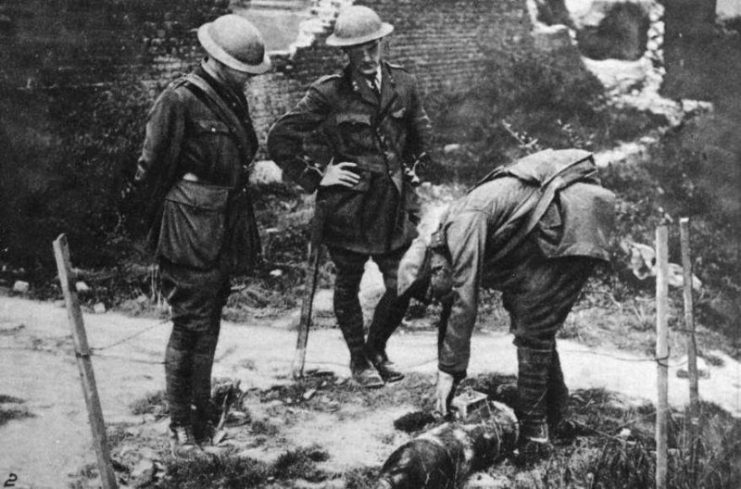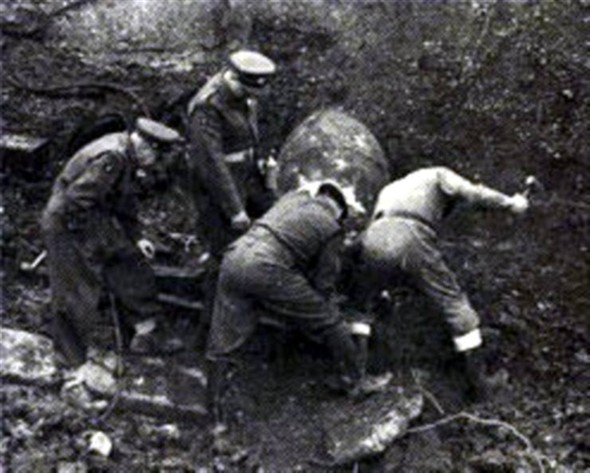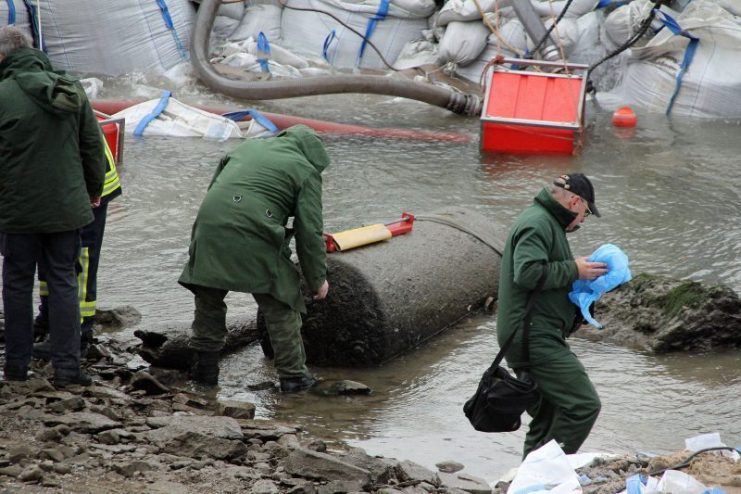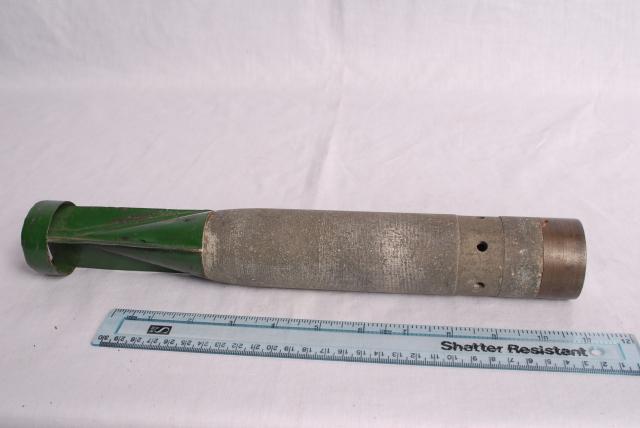A family heirloom that was brought back home after a British soldier who’d done military service in Japan and Asia and passed down through the generations caused an uproar when the family discovered that the seemingly harmless souvenir turned out to be an unexploded bomb.
Lynis Jones and her husband Lyn came upon the unexploded bomb when they were doing a little bit of spring cleaning at home in Bridgend in South Wales, UK. Naturally, the police were called and the bomb squad assembled. The device was then safely detonated in a place where it wouldn’t be a danger to anyone.
Just in case this was a prank, the police department sent two officers and then a Chief Inspector. They snapped off a photograph to the army headquarters in Hereford, who promptly sent out a military unit, which arrived at 11 p.m. The military then set about testing the bomb. They x-rayed the device using equipment in their vehicle whereupon it was determined to be live. The police stated that if the bomb had not been moved around as much, for example, if it had been lying untouched in an attic for decades, they would have evacuated the street.

“South Wales Police received a report of what appeared to be an old explosive device from World War Two which had been found at a house in Bridgend. An ordnance disposal team inspected the device and plans were put in place to dispose of it safely. The device was taken to nearby Holy Cyw Common on Tuesday morning and blown up because they needed a 200m clear area for it to be destroyed,” a spokeswoman of the South Wales Police said.
The family found the whole scenario hilarious, according to Lynis’ daughter Jessica. She also stated that her grandfather, who had been dead for twelve years, would have loved the story. She’d even taken the bomb to school for show-and-tell when she was a little girl.
“I uploaded the story on social media and have had a lot of friends telling me they remember getting to hold it and stuff when they were with me,” Jessica said.
Stories like this one are exceedingly rare given that most unexploded ordnance is found deep underground and usually discovered by construction workers, making it highly unlikely that any member of the public would stumble upon them. Enough ordnance has been discovered that it’s inspired something of a Europe-wide cottage industry that deals with this type of situation. For example, Zetica specializes in both the recovery and disposal of unexploded bombs and ammunition, and they estimate that private sector firms handle approximately 8,000 items like this each year.

Not many of these device disposal stories make the news, though. The ones that do tend to be stories involving wide-spread evacuations, involving city-blocks, streets or other prominent locations such as transportation hubs or parliamentary buildings.

Such locations often highlight the strategic bombing decisions made by either the Axis or Allied forces. According to the Ministry of Defense, only 10% of bombs dropped on the UK in the Second World War did not explode, and the typical bomb dropped by the Nazis ranged from 100 to 550 pounds. Later on in the war, that range went up to a devastating 1000 to 2200 pounds.
The Ministry of Defense reports that London City Airport was the site of the fourth 1000-pound bomb in the past fifteen months. The others were in the city of Bath on May of 2016, Portsmouth on September 2016 and London on March of 2017.
All rather scary considering that something as innocuous as a scrape of a workman’s shovel along the body or fuse packet of a bomb could cause a chain reaction, detonating the bomb within a hundredth of a second.
